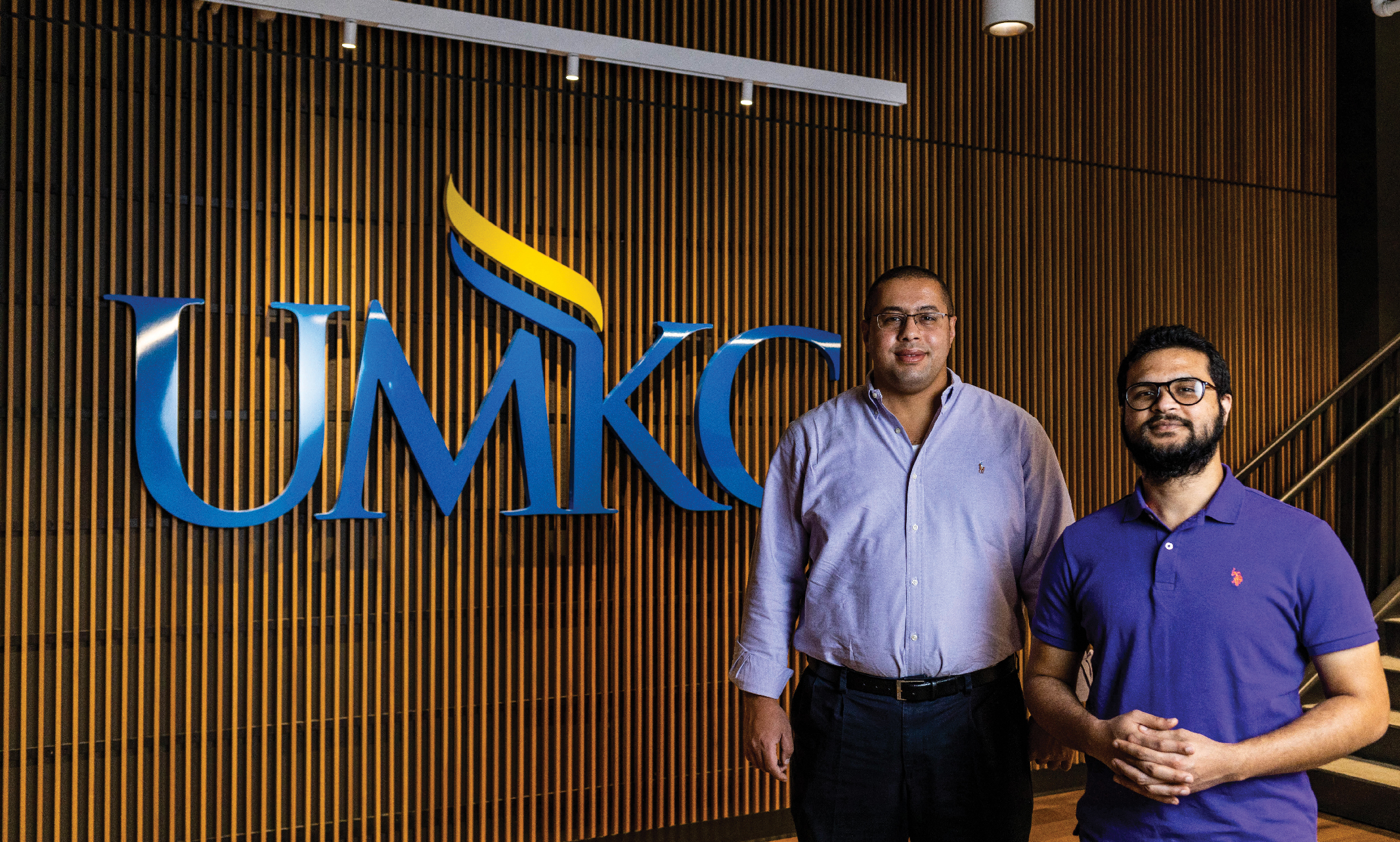Ahmed Hassan, Ph.D., has long been fascinated by electromagnetics and how electrical impulses can affect the smallest of particles, particularly those with complex shapes. Inside the Advanced Power, Electronics and Electromagnetics Lab at the Robert W. Plaster Free Enterprise and Research Center, the associate professor is focused on how to use high-powered electrical pulses to treat cancer cells.
Scientists have for some time explored the use of electrical pulses to deliver drugs and gene therapies into biological cells. But where most of those studies have looked at cells in a two-dimensional realm, Hassan is taking things a step further.
“At UMKC, we are one of the first groups to study how the three-dimensional shape of actual cells, grown in realistic 3D environments, affects their electrical response,” Hassan says. “It’s only by looking at the full 3D structure that you can predict how the cell will behave when it’s excited by an electrical stimulus.”
Through their research, Hassan and his graduate research assistant Somen Baidya have shown that the outer shape of a cell plays a significant role in how it will react to an electrical stimulus. With help from the National Institute of Standards and Technology (NIST), where their scientists have been able to determine and reconstruct the exact 3D shape of cells, Hassan and Baidya now have thousands of cells shapes to work with, including cancer cells.
Precision to the One-Trillionth Degree
Armed with an array of computers to create computational models and simulations, Hassan is working with multiple computational techniques that can be used to calculate the response of those complex, three-dimensional cancer cells to electrical impulses.
Electroporation is a technique in which an electrical field is applied to a cell in order to increase the permeability of the cell membrane. This allows chemicals such as therapeutic drugs or even DNA to easily be inserted into the cell. The technique offers potential advantages over other therapeutic methods of cancer treatments because of its noninvasiveness and lack of toxicity for noncancerous cells, as well as the possibility of being used in combination with other therapies. The selectivity of the electroporation technique also makes it safer than other techniques that cannot differentiate between healthy and cancerous cells.
"If you want to kill cancer cells, then you apply a strong enough electrical stimulus to break down the cell membrane completely. We’re trying to figure out the optimum pulse that will give us the correct response." —Ahmed Hassan, Ph.D.
Variations in the rate of supraelectroporation used to pierce the cell membrane and penetrate the cell’s internal organelles can guide the selective targeting of desired cells with specific shapes. The current goal, Hassan says, is to determine how to calculate — with a high degree of accuracy and efficiency — the necessary voltage and precise location of these electrical pulses on the cell’s membrane to achieve the desired effect.
Electrical pulses are delivered at very high amplitudes for extremely short durations of time — from nanoseconds, which are one-billionth of a second, to picoseconds, which are one-trillionth of a second. In some instances, the goal is to create a tiny hole in the cell membrane, just large enough to deliver the material inside the cell without harming it.
“If the holes become too large, the cells might die,” Hassan says. “In some cases, that’s desired. If you want to kill cancer cells, then you apply a strong enough electrical stimulus to break down the cell membrane completely. We’re trying to figure out the optimum pulse that will give us the correct response.”
Once the computational techniques are developed, the next step will be to develop a machine learning (ML) platform that uses cell information to predict the precise excitation characteristics necessary to achieve the correct effect on the cell.
Ultimately, Hassan says, the new Plaster Center Power Lab will give him the capability to develop a novel, tunable, high-voltage pulser that can generate the desired electric surge needed as predicted by the ML platform. It will be designed to generate necessary short-time pulses of nanosecond or picosecond duration with high peak amplitude optimized for each cell shape.
From Medicine to the Moon
Once developed, this ML technology could be used to treat other types of cells, for instance, isolating and treating or modifying immune cells. Moreover, different electrical signals can be used to selectively move and isolate specific cells from a collection of cells.
“It’s like applying a magnet to the cell. That will start attracting the cell differently based on its shape,” he says.
Hassan is currently working on the first two aspects of the project to get preliminary data, then working on funding to start building the hardware.
“We’ve been working on this for three years,” he says. “An optimistic timeframe is that we’re halfway there to finishing the engineering aspects before we can take it to the medical researchers and ask them to help us with the actual biological tests.”
A member of the UMKC faculty since 2015, Hassan serves as director of the Multidisciplinary Multiscale Electromagnetics Lab. Before coming to UMKC, he began studying nanostructures with extremely complex shapes as a postdoctoral researcher at NIST. There he developed a large library of computational codes to study their response to electromagnetic stimulus.
“When I came to UMKC, I was using this library of computer codes that I had developed as an electrical engineer to study complex shapes with a wide range of applications,” Hassan says. “One application was to study biological cells with complex shapes.”
Another is looking at the electrical properties of sand and rock particles from the moon. Working with his collaborators at NIST, Hassan was able to obtain the three-dimensional shapes of sand particles obtained during the Apollo 11 mission to the moon.
“We’re trying to calculate the electrical response of those sand particles as another exciting application of using electromagnetic radiation to understand the physics of complex shaped particles,” he says.

